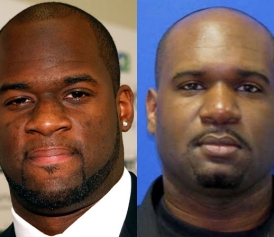 You know that queasy, heart-racing, gut-wrenched feeling you get when you're scared or feeling anxious? Everyone has experienced this because fear is normal—a helpful mechanism, even—preparing us for dangerous situations like a vicious-looking dog or a twister approaching. But irrational fears hold us back and keep us from enjoying our lives as much as we might like to. If you're tired of letting your fears get the best of you, here are some proven tips and strategies to take you from terrified to calm and confident.
You know that queasy, heart-racing, gut-wrenched feeling you get when you're scared or feeling anxious? Everyone has experienced this because fear is normal—a helpful mechanism, even—preparing us for dangerous situations like a vicious-looking dog or a twister approaching. But irrational fears hold us back and keep us from enjoying our lives as much as we might like to. If you're tired of letting your fears get the best of you, here are some proven tips and strategies to take you from terrified to calm and confident.
My Background: An Extreme Fear of Heights
I can't climb a three-step ladder without shaking. For real. My fear of heights really is that extreme. Like most people with phobias, though, I've learned to manage pretty well by avoiding what I fear: I don't go on balconies, shy away from seats high up in the concert stadium, and steer clear of things requiring climbing. Until recently acrophobia wasn't really debilitating; I can do just about everything I want to on safe ground.
A few months ago, though, I went to a fair with my five-year old daughter, and the only ride I could bring myself to go on with her was the ferris wheel. (After turning her down for every other ride, I had to go on something.) Big mistake. Our car paused at the top for what I thought was an eternity, swaying beside the utility wires and treetops. While I clutched the pole in the middle of the car for dear life, my daughter laughed with pure joy and asked, "Isn't this fun, Mommy? Aren't you happy you're here now? You're not SCARED, are you?" I realized then that I had to get over this problem.
 Exactly two weeks ago, I pushed myself off the Leap of Faith, a "60-foot almost-vertical drop" waterpark slide. Literally—you lie down flat and push yourself off and then you're hanging frozen in mid-air for a second before you hit the slide and go 20-miles-an-hour or so down a tube through shark-infested waters. Photo: Atlantis.com
Exactly two weeks ago, I pushed myself off the Leap of Faith, a "60-foot almost-vertical drop" waterpark slide. Literally—you lie down flat and push yourself off and then you're hanging frozen in mid-air for a second before you hit the slide and go 20-miles-an-hour or so down a tube through shark-infested waters. Photo: Atlantis.com
I've detailed below some of the mind hacks I needed to use to do this complete 180, as well as other techniques psychologists suggest for overcoming fears and anxieties of all types, whether you're afraid of heights, dogs, public places, flying, or anything else.
Step 1: Learn More About What You Fear
The better you're able to understand what you fear, the better your chances of feeling less anxious about it. You can challenge your negative or unrealistic thoughts about the things you fear by learning more about them. Jeff Guardalabene, a clinical psychologist in Portland, said:
For example, with a fear of flying, knowing that the wheels will go "bump" when they are retracted, understanding that it is normal to experience mild turbulence, and even peeking at the accident statistics for airplane flight (hundreds of millions of flight miles with barely any accidents), can really help.
Knowledge is power. And comforting.
In my case, I watched countless YouTube videos of people happily going down that waterslide until it almost seemed fun. I researched enough to convince myself that no one died of a heart attack going down it.
Knowing why you're afraid—the root cause—might also be insightful. Andrew Canella, a musician with a bachelor's in psychology, wrote in with a Simpsons episode example of Marge's fear of flying: her fear stemmed from seeing her father as a male flight attendant when she really thought he was a pilot. Yes, it's an offbeat example, but uncovering even the weirdest root causes can be worthwhile, because they can get you to talking about your fears and then accepting what you can or can not control. (If you have a fear of flying, we've previously mentioned a free ecourse to help you discover the underlying reasons why you might be afraid to take to the skies.)
You might learn that something that caused your fear was unsubstantiated or is no longer relevant. For example, I was a frail kid and broke my arm a couple of times (once just tripping on the lawn), which might explain my fear of heights now. Knowing this—and knowing that I'm much stronger now—might go a long way towards helping me feel more comfortable at roof parties.
Step 2: Visualize and Expose Yourself—Gently—To What You Fear
Visualization and gradual exposure are techniques often recommended for tackling fears. Imagine yourself in a situation confidently facing your fear, whatever it is. Guardalabene advises you be as clear as you can: If you're afraid of taking tests in a certain class, visualize every detail, like where you sit, the feel of the desk, who's sitting next to you, and so on. Imagine yourself in the situation and breathe.
Helpguide.org, a non-profit resource for confronting health challenges, suggests you gradually expose yourself to your fear by working up a "fear ladder". For example, if you're afraid of dogs, your fear ladder might be: look at pictures of dogs, watch a video with dogs in it, look at a dog through a window, stand across the street from a dog on a leash, etc.
If you have a very deep-seated fear, you may want to see a therapist for guided visualization or hypnosis. Dr. Wylie Goodman, a clinical psychologist in New York, says that in these techniques, the therapists helps you into a relaxed state so you feel safe and secure while facing the feared place or object. Sometimes it's harder for people to face their fears consciously, so these relaxed-state techniques and being guided by a therapist's voice might be more effective.
Although I didn't imagine myself climbing all those stairs and catapulting myself from that ridiculous height, perhaps in all those YouTube watching sessions I subconsciously placed myself there. I did visualize a happy outcome—emerging safely from the water tube and triumphantly writing this article. I think that provided motivation.
Step 3: Use Physical Tricks to Relax
Guardalabene recommended progressive muscle relaxation (PMR) or meditation to learn to relax all the parts of your body. When your body is relaxed, your mind may follow. (One trick we've mentioned before for PMR, when you tense different muscle groups in succession, is repeating "the" to stop your mind from racing.)
Learning deep breathing techniques can also help you deal with overwhelming feelings of panic.
If it's a critical, one-shot deal, like a medical test or plane flight, you can ask your physician for medication (e.g., Xanax) to help with your anxiety or fear.
A drink called "Miami Vice"—part pina colada, part strawberry daiquiri—was the physical relaxer I used to reduce my inhibitions and get relaxed enough to start climbing those stairs.
Bonus Points: Mind Hacks
When it's a singular event or task you want or have to overcome, use tricks to gain more courage and commit yourself to it:
- Enlist others' help: Consulting with a therapist, asking a friend for advice, or posting your question on your social networks can make you more likely to follow through with something you might otherwise easily back off from.
- Make it hard not to follow-through: You can overcome fear and anxiety by making it your only option, e.g., buying a manual transmission when you don't know how to drive stick shift to force yourself to learn to drive one. Spending a lot of money on something that you want to learn or do is usually a good incentive for overcoming that fear. Build in things that will make it hard for you to cop out; for example, walk a long way somewhere so if you don't take advantage of the opportunity it will be a waste of your time and energy.
- Know yourself: If the event is something that you have control over (e.g., a walk-in clinic to get a shot or cliff diving at any moment), pay attention to your own clues so you can act when your adrenaline and confidence is highest. For example, I knew when my resolve started waning and I was hitting the "now or never" threshold. That's when I knew I had to start moving.
In the End: Acceptance
In the end, it may all come down to acceptance. Acceptance of the thing you fear and that you can't control it. All three psych experts I talked to referred to this acceptance concept. Dr. Goodman mentioned a Japanese approach called Morita therapy, which is outlined as: Accept Your Feelings. Know Your Purposes. Do What Needs to Be Done. (Sounds very Japanese, right?)
So, after you've done all your research, prepped yourself with visualization and gradual exposure, consulted with others, committed yourself to this task, and so on, just stop and try to relax until the event arises. (Or just keep practicing, building your strength.) Often, the fear of the thing is worse than the reality.
Your Turn
What tricks or strategies have you used to overcome your fears or nervous situations? We're all ears in the comments.
Photo remixed from originals by Fireice and ostill / Shutterstock.
Special thanks to Jeff Guardalabene, Wylie Goodman, and Andrew Canella for their help with this post.
Jeff Guardalabene, PsyD is a clinical psychologist in Portland, Oregon. He works in a college counseling center and blogs at drjeffblog.blogspot.com.
Wylie Goodman is a clinical psychologist in private practice in New York City who works with clients both in-person and via Skype. She received her certification in Japanese psychotherapies from the ToDo Institute in Vermont and studied Mindfulness-Based Stress Reduction with John Kabat-Zinn. You can learn more about her practice at her website, http://www.east-westpsychotherapy.com.
Andrew Canella holds a degree in psychology and runs Internet Soufflé, a technology and design blog with a focus on human factors engineering. His site is andrewcanella.com and twitter handle is @andrewcanella.
You can follow or contact Melanie Pinola, the author of this post, on
Twitter or
Google+.





 You know that queasy, heart-racing, gut-wrenched feeling you get when you're scared or feeling anxious? Everyone has experienced this because fear is normal—a helpful mechanism, even—preparing us for dangerous situations like a vicious-looking dog or a twister approaching. But irrational fears hold us back and keep us from enjoying our lives as much as we might like to. If you're tired of letting your fears get the best of you, here are some proven tips and strategies to take you from terrified to calm and confident.
You know that queasy, heart-racing, gut-wrenched feeling you get when you're scared or feeling anxious? Everyone has experienced this because fear is normal—a helpful mechanism, even—preparing us for dangerous situations like a vicious-looking dog or a twister approaching. But irrational fears hold us back and keep us from enjoying our lives as much as we might like to. If you're tired of letting your fears get the best of you, here are some proven tips and strategies to take you from terrified to calm and confident.  Exactly two weeks ago, I pushed myself off the
Exactly two weeks ago, I pushed myself off the 















